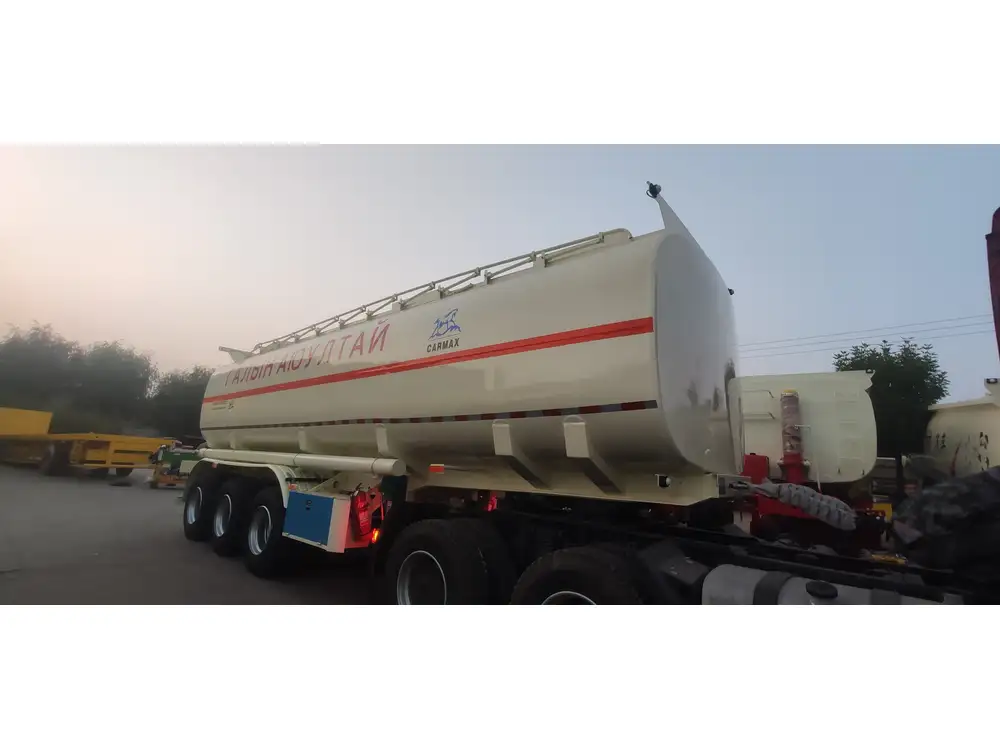When it comes to transportation in the agricultural sector, understanding the dimensions of semi grain trailers is paramount for manufacturers, farmers, and logistics managers alike. Whether you’re looking to maximize load efficiency, ensure compliance with regulations, or streamline your farming operations, this guide offers an in-depth exploration of semi grain trailer specifications, industry standards, and the factors influencing length choices.
Overview of Semi Grain Trailers
Semi grain trailers are integral to the agriculture industry, designed specifically for transporting bulk grains, including corn, wheat, soybeans, and other commodities. Their construction incorporates robust materials that withstand the rigors of heavy loads and varying weather conditions. The right trailer not only enhances efficiency but also reduces operational costs over time.
Common Types of Semi Grain Trailers
There are various types of semi grain trailers, each tailored for specific needs within the agricultural sector:
| Trailer Type | Description | Ideal Use Case |
|---|---|---|
| Tipper Trailers | Features a hydraulic lift system for easy unloading. | Ideal for grain storage facilities and farms. |
| Walking Floor Trailers | Equipped with a floor that moves cargo out of the trailer. | Suitable for both grain and bulk products like feed. |
| End Dump Trailers | Design allows for dumping from the back. | Best for quick unloading in defined spaces. |
| Bulk Grain Trailers | Typically with a higher volume capacity for heavier loads. | Perfect for transporting large volumes of grains. |

Standard Lengths of Semi Grain Trailers
The length of a semi grain trailer is not only pivotal for meeting regulatory requirements but also for optimizing load capacity. Generally, semi trailers range in length from 28 feet to 53 feet, and sometimes even larger, depending on local regulations. This section delves into the standard lengths, alongside their advantages and disadvantages.
Length Classification
28-foot Trailers
- Usage: Best for small farms or agricultural operations.
- Capacity: Typically carries up to 400 bushels of grain.
- Pros: Easier to maneuver in tight spaces; lower purchase cost.
40-foot Trailers
- Usage: Commonly used in mid-sized agricultural businesses.
- Capacity: Holds around 750 bushels.
- Pros: Balanced size offering efficiency without much compromise on capacity.
53-foot Trailers
- Usage: Preferred by larger commercial operations.
- Capacity: Can transport over 1,000 bushels.
- Pros: Maximizes payload delivery in fewer trips, ideal for extensive harvest seasons.
Regulatory Considerations
Before selecting a semi grain trailer size, it’s crucial to familiarize yourself with regulations that govern trailer dimensions in your region. Most states in the U.S. allow a maximum trailer length of 48 to 53 feet for semi trailers. Exceeding these lengths can lead to penalties and complications in logistics.

Factors Affecting the Length Decision
Choosing the appropriate semi grain trailer length is influenced by various factors:
1. Type of Crop
Different crops come with distinct bulk densities affecting how they fit into the trailer space. For example, corn is less dense than wheat, necessitating different loading strategies.
2. Transport Distance
For longer hauls, investing in a larger trailer can optimize efficiency by decreasing the number of trips needed, thus conserving fuel and time.

3. Maneuverability
Consideration of the areas where trailers will be loaded and unloaded is vital. Smaller trailers provide better maneuverability in confined spaces and narrow country roads.
4. Weight Restrictions
Local weight limits must be observed—especially when fully loaded. Ensure that chosen lengths conform to these restrictions to avoid fines and maintain road safety.
5. Operational Costs
Evaluate the total costs including the purchase or leasing price, maintenance, insurance, and fuel efficiency. Larger trailers could lead to savings despite the higher upfront cost if used effectively.

Comparing Height and Width
Beyond length, height and width also play a crucial role in the effectiveness of a semi grain trailer. Standard semi grain trailers are typically 102 inches wide and can vary in height depending on the loading requirement. The standard height ranges from 13.5 to 14 feet.
Here’s a succinct comparison of height and width variations:
Height Comparison
| Trailer Type | Average Height | Benefits |
|---|---|---|
| Standard Trailers | 13 to 14 feet | Compliant with road regulations; versatile. |
| Extended Height Trailers | 14 to 15 feet | Higher load capacity; enhanced efficiency in transport. |
Width Considerations
| Standard Width | Large Capacity Width | Application |
|---|---|---|
| 102 inches | 108 inches | Specialized for bulk transport and larger loads. |

Enhancing Efficiency with Size Optimization
Selecting the appropriate dimensions of your semi grain trailer optimizes operations significantly, maximizing the payload with minimal trips, and enhancing profitability. Here are some strategies for efficiency enhancement:
1. Load Weight Management
Confirm that the weight of loaded grain doesn’t exceed the limits of the trailer. Proper balance on both sides prevents swaying and enhances driving safety.
2. Choosing the Right Combination
Pairing the grain trailer with an appropriate pulling truck ensures you leverage both vehicle’s capabilities effectively. Check the truck manufacturer’s specifications for optimal performance metrics.

3. Maintaining Trailers
Regular maintenance of the trailers, including checking the structural integrity, wear and tear, and even inspecting the braking system, can prevent accidents and promote longevity.
Conclusion
In summary, understanding the question of “how long is a semi grain trailer?” extends beyond a mere measurement; it encapsulates a variety of operational, regulatory, and economic considerations that ultimately affect your agricultural business’s efficiency and productivity. This article provides substantial insights into the types, standard lengths, influencing factors, and best practices in operating semi grain trailers, guiding you toward informed decisions tailored to your unique needs.
By carefully analyzing these elements and ensuring compliance with industry standards, manufacturers and farmers can enhance their logistics capabilities, ensuring that the heavy lifting of transporting grain is handled efficiently and effectively. When optimizing trailer choice, remember—it’s not just about the length; it’s about the full pathway from the field to the market, ensuring that every bushel counts towards your agricultural success.



